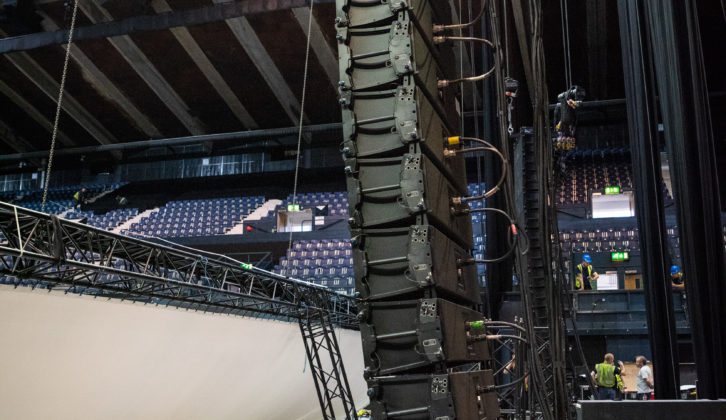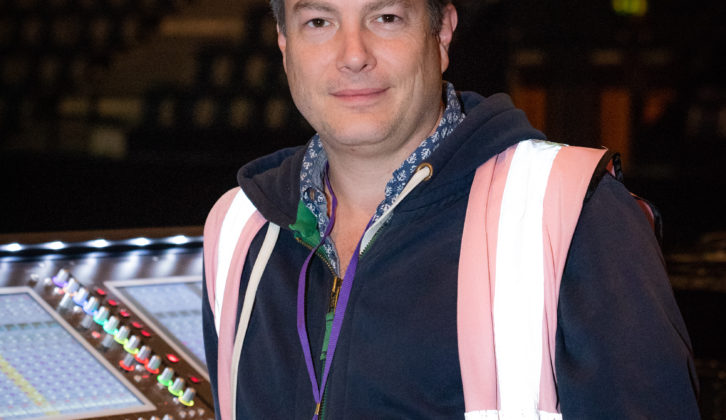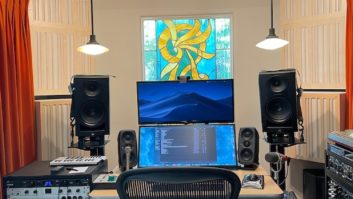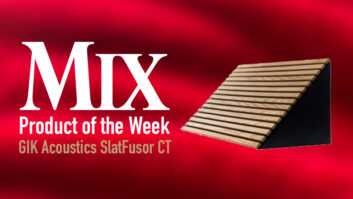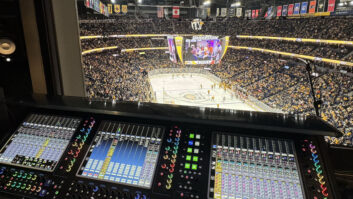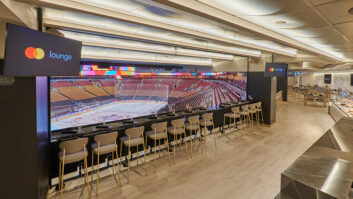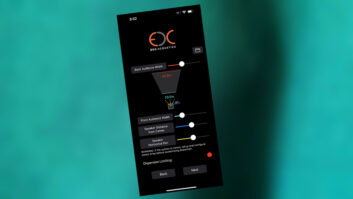London, UK (November 8, 2018)—The Queen biopic, Bohemian Rhapsody, took eight years to produce, but cleaned up last weekend when it finally debuted at the box-office, raking in an amazing $141.7 million worldwide, according to Variety. That tally includes a huge $12.2 million opening in the U.K.—and to help ensure that, the film’s world premiere was held in the SSE Arena Wembley, with audio provided by Britannia Row. The event proved to be more of a challenge that might initially be expected, requiring extensive efforts to alter the venue’s acoustics, and a brand-new mix of the film, created solely for the one-time premiere screening.
There were three hangs of L-Acoustics K2s behind the screen L/C/R, with a central hang of KS28 subs as well.
Audio consultant Colin Pink
Brit Row was faced with not only covering all 7,000 seats at the premiere, but also ensuring that the reverberant venue didn’t affect the film’s acoustics. The catch was that Paul Massey, re-recording mixer for the soundtrack, went to considerable lengths adding reverb and even hints of slap-back to the soundtrack to reproduce the authentic 1980s Queen concert experience for cinemas goers. “But of course, when staging such a premiere in a room like Wembley, using a huge 7:1 audio system from Britannia Row Productions (Brit Row), the last thing you want is added reverb and slap-back,” said audio consultant Colin Pink.
Technical producer Andy Peat, of Andy Peat Associates, had worked with James MacFarlane, senior technical manager at 20 Century Fox, since early summer, to prepare the event. The first consideration was screen-size, as that would help determine audio logistics.
“We worked with projection specialists Motion Picture Solutions to define how large a screen could be used; obviously, for an arena scale show, everyone wanted it to be as large as possible while still fulfilling the roll of being of the highest technical quality,” said Peat. “At 28m (w) by 11.7m (h), the 1.4 Perlux gain screen was enormous. Made by Harkness at their French facility, the only factory large enough to produce such a sprayed screen, it was rigged by Blackout who also took care of the multiple PA points. It was slightly angled back from vertical by three degrees, so the light reflected back directly onto the audience. The angle makes a big difference to how bright the audience perceives the image to be.”
While inevitably the film’s audio would be presented loudly, it was critical that vibrations from the audio not affect the projectors in any way, as the slightest shake would be readily visible on a screen that large. Accordingly, the projection booth was built and installed by Steel the Scene and lined with 120 mm thick acoustic panels to isolate any sound from the booth to the outside. The projector module also sat on an isolation island so the projectors themselves were unaffected by the vibrations of operators moving within the booth.
Nonetheless, the main audio concern remained that the film had to sound like it was being presented in an intimate screening room, not a massive arena. As Peat noted, “With regard to sound, Colin had flagged the reverb issue early. He has done several film premieres with 20 Century Fox, as have Brit Row, and the team there like them both. 20 Century Fox made sure the technical conversations between Colin, Brit Row and the film makers sound team took place.”
Perhaps the key conversation was the one that lead to a special mix of the film being created just for the premiere screening. “For me the most significant thing was to persuade the film mixer Paul Massey to make a different mix for the premiere,” said Pink. “There is a great deal of live sound concert-style music in the soundtrack and naturally they have added effects to create the atmospheric experience of arenas and stadia, including lots of reverb. I talked this through with Paul and he in turn convinced Fox. They went away and removed all those effects—no small undertaking on their part – recognising that the room with a full-on rock power PA system would re-apply those effects quite naturally.”
Josh Lloyd from Brit Row handled system design, which comprised three hangs of K2s behind the screen L/C/R, with a central hang of KS28 subs as well. There were two hangs of Kara L/R at the rear of the arena and to complete the surround system there were three flown hangs of Kiva down each side of the arena floor. “Having three main hangs instead of two makes a big difference, because you distribute the energy—you control the room better,” said Pink. “With the precise calculated vertical control of the L-Acoustics system and using only a central flown cardioid array of flown subs, Josh’s design meant no energy went into the roof; that allowed us to maximise vocal intelligibility. It all worked a treat, in fact, it was the best sound I’ve ever heard in there.”
Britannia Row • www.britanniarow.com
